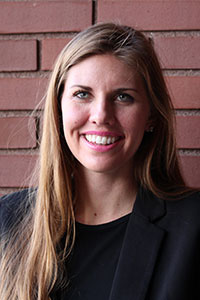October 2020: Paycheck Protection Program Loan Forgiveness

PAYCHECK PROTECTION PROGRAM LOAN FORGIVENESS
An overview of Form 3508S, Form 3508EZ, and Form 3508
As of early October, the Paycheck Protection Program (PPP) has provided 5.2 million loans worth $525 billion to small businesses across the country. Established by the CARES Act in response to the COVID-19 pandemic, the PPP provided loans to eligible small businesses and nonprofit organizations. Proceeds from these loans could be used to cover payroll costs, mortgage interest, rent, and utilities.
An important aspect of the PPP is that many small businesses will be eligible to have the loan either partially or completely forgiven. As the pandemic continues to affect our economy, the forgiveness of these loans is crucial for many small businesses. In order to receive forgiveness, one of three applications must be filed with the Small Business Administration (SBA): Form 3508S, Form 3508EZ, or Form 3508.
For all forgiveness applications, borrowers must track the amount of eligible payroll and nonpayroll costs paid with the loan proceeds.
Eligible payroll costs include:
- The sum of gross salary, wages, tips, commissions, paid leave, and allowances for dismissal or separation paid or incurred during the covered period.
- For each individual employee, the amount of cash compensation eligible for forgiveness may not exceed an annual salary of $100,000
- Compensation can only be included for employees who were employed during the covered period
- 60% of the potential forgiveness amount must be used for payroll costs
Eligible nonpayroll costs include:
- Interest payments on any business mortgage obligations for real or personal property incurred before February 15, 2020
- Business rent or lease payments paid or incurred for the real or personal property during the Covered Period, pursuant to lease agreements in force before February 15, 2020
- Utility payments, including electricity, gas, water, transportation, telephone, or internet for which service began before February 15, 2020.
Form 3508S is the simplest of the forgiveness applications. You may only use this form if you received a PPP loan of $50,000 or less. While expenses still need to be tracked and may need to be submitted to your lender, no calculation is required as part of the application. The borrower must make certain representations about the loan, and then the forgiveness application is submitted to the SBA by the lender.
Form 3508EZ is the simplified version of Form 3508. To use Form 3508EZ, the borrower must meet one of the following criteria:
- The borrower is self-employed, an independent contractor, or sole proprietor who had no employees at the time of the PPP loan application
- The borrower did not reduce annual salary or hourly wages by more than 25% during the covered period, and the borrower did not reduce the number of employees or the average paid hours of employees between January 1, 2020, and the end of the covered period
- The borrower did not reduce annual salary or hourly wages by more than 25% during the covered period, and the borrower was unable to operate at the same level of business activity as before February 15, 2020, due to compliance with requirements or guidance issued between March 1, 2020, and December 31, 2020
- Enter the amount of total eligible payroll costs
- Enter the amount of business mortgage interest payments made
- Enter the amount of business rent or lease payments made
- Enter the number of business utility payments made
- Combine steps 1 through 4
- Enter the amount of your PPP loan
- Divide the amount of total eligible payroll costs by .60 and enter the amount (This determines whether or not nonpayroll costs exceed 40% of the total forgiveness amount)
- The smallest of steps 5, 6, or 7 is the eligible amount of forgiveness
If a borrower does not qualify to file Form 3508S or Form 3508EZ, then Form 3508 should be filed. The forgiveness calculation is similar to Form 3508EZ, with the addition of PPP Schedule A and the Schedule A worksheet. PPP Schedule A results in a more robust calculation of total payroll costs and may result in a reduction of payroll costs due to the full-time equivalency reduction or salary reductions.
Borrowers may choose to elect a covered period of either 8 or 24 weeks. The covered period is the time frame in which expenses are eligible to be included in the forgiveness calculation. Additionally, if a borrower also received an EIDL advance amount from the SBA that does not need to be repaid, this amount will be subtracted from the amount eligible for forgiveness. Once the forgiveness application is completed, it should be submitted to your lender, who will remit the application to the SBA. It is also important to note that some lenders will accept hard or digital versions of the aforementioned applications, and some lenders have an online portal on which applications must be submitted. Please contact your lender to determine what is applicable to you.
Depending on each borrower’s individual circumstances, the forgiveness application can be quite complicated. The above explanation is very simplified and condensed. We are available to complete these calculations for you if you would like assistance. Please reach out to us if you have any questions regarding the PPP Forgiveness Application process, or if you would like more information on the PPP services we can provide.

Employee Spotlight | Cassie Corkle
Cassie joined the firm as an intern for the 2011 tax season and formally began as an associate in July 2012. She graduated magna cum laude from Colorado State University in May 2012 with a Bachelor of Science degree in Business Administration with an emphasis in accounting and marketing and a Bachelor of Arts degree in English. She reviews individual and business tax returns and assists with cost segregation studies.
In her spare time, Cassie enjoys spending time with family and friends, fishing, snowshoeing, and escaping to her family’s cabin.